JULES ALLEN, PHOTOGRAPHER
Special for THE NEW TIMES HOLLER!
From the Still Motion Arts Desk by
© Amir Bey, 2009
MAY 6
All photos by Jules Allen, (c)
|
JULES ALLEN
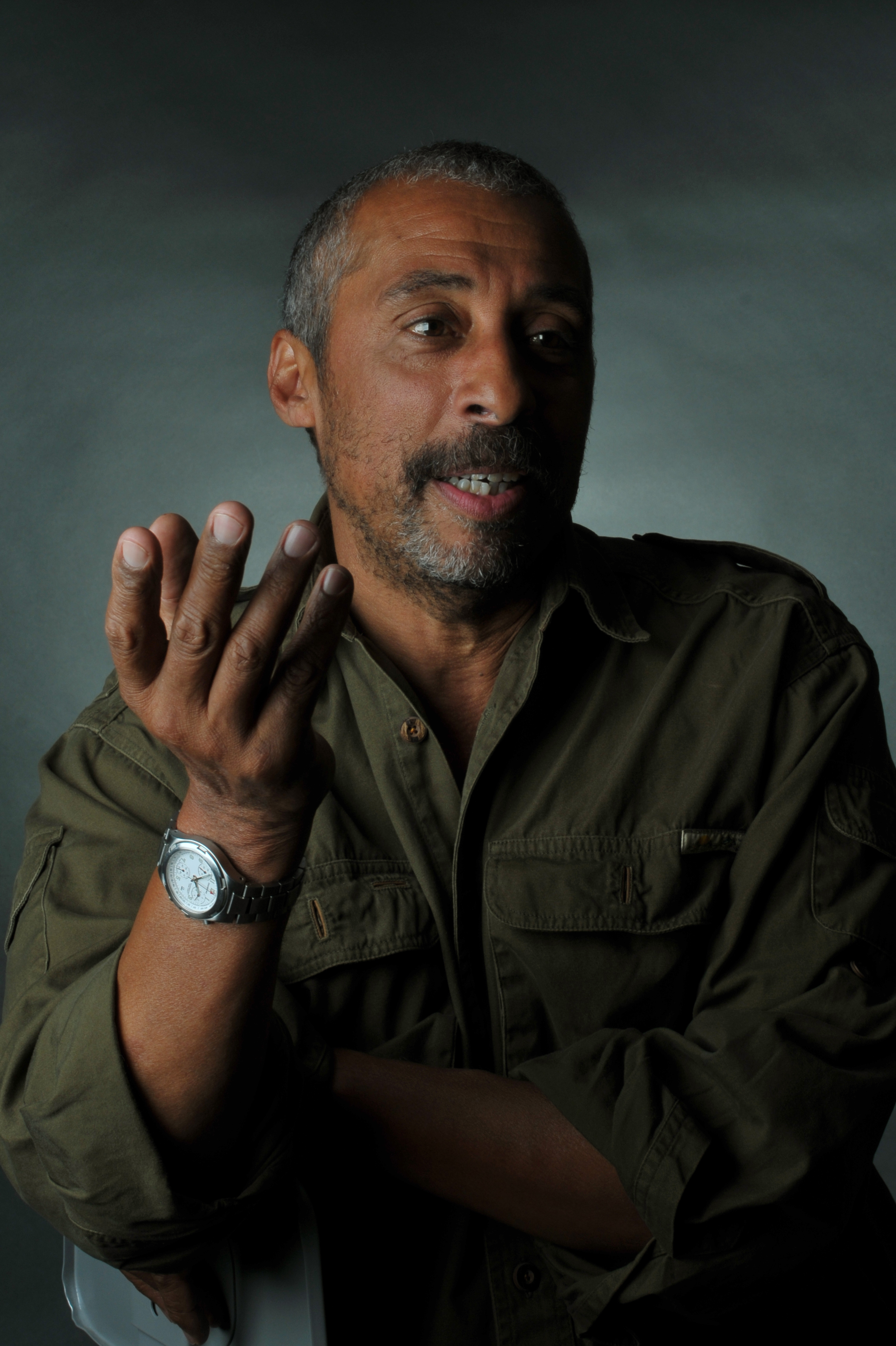
|
HOLLER!: Who are your favorite photographers? Why?
ALLEN: Manual Alvarez Bravo taught me how to see how land dictates culture visually.
Roy DeCarava is the first photographer to talk about having the ?right? to photograph and the need to define oneself in an oppressed culture. Clarity is an essential element in redefining oneself on one?s own terms. Roy really reinforced the concept of that clarity, in that ?the more specific one is the more general one can be."
Robert Frank, in addition to his innovative approach to photographing in a seemingly unstructured texture was one of the first American (Swiss born) photographers to embrace an American identity as a whole. Black people were photographed with the equal grace afforded to other Americans. He really saw America as one country, separate but equal. The rhythm, light and balance as well as the social aspects of his work make him one of the greats, and one of my favorites.
Edward Weston was the first photographer to give me the sense of a visual rhythm, a command of the material, which fueled his personal ideas and gave him imaginative authority over subject matter. His ability to translate forms allowed him to graciously translate visual information it showed me what visual freedom was and could be.
Josef Koudelka has an intensity and structural proportion of images. He seems to makes photographs of images not frequently seen. This is due to the combination of his imagination, (technique), subject matter and locations.
|
Africa 1
Darfur, Sudan, 2007
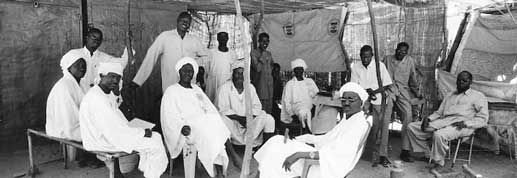
|
HOLLER!: Are you fully digital, or are you combining printing and print film with digital?
ALLEN: I am digitally literate, but it is not my language. It is almost impossible to work as I do without some digital facility. All my personal work is film based and darkroom production. After that, when digital application is required, I am competent enough and with student assistance, I manage nicely. But, it is not the foundation of my photographic sensibility.
|
Darfur, Sudan, 2007 |
Africa 2
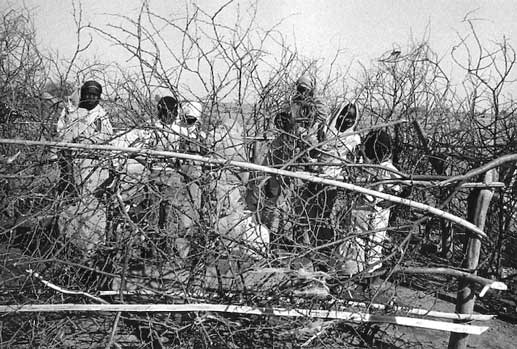
|
HOLLER!: Do you feel that digital technology has taken something away from photography, such as darkroom work and other processes?
ALLEN: No, in the same way that I didn't feel commercial work interfered with one's personal work. It is just another way to get to whom you are and what you want to express. You always use everything to get to who you are.
In my lifetime, film will always have life.
|
From Allen's Rhythmology Series, 2009
|
Arizona 2
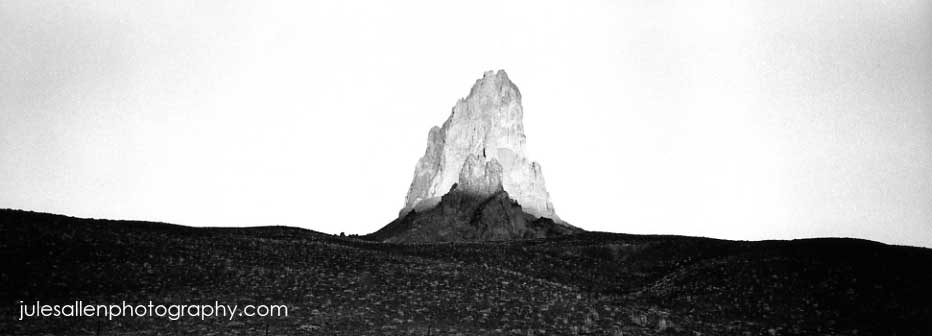
|
HOLLER!: Your Rhythmology series is less about social observation, but an exploration into the rhythms between light and culture, and as you say ?an intersection of nature and culture?, where you?re looking at the interplay between external ?hand built? forms that sometimes involve people. From that work I feel an urban and social context that is not abstract, even if the forms and shadows that you work with may seem that way. True?
ALLEN: Very true, you have a keen eye for the obvious, Amir.
I am only trying to make imagery interesting. There is more than a straightforward organization to composing an image. It is like listening to Miles play, "On the Corner," I am just trying to bend the note. Or like listening to Coltrane, I am just trying to play some overtones.
I see myself as photographing on the backbeat and to give a verbal analogy, a successful photograph, for me, a photograph has to have a downbeat. So, it is not really abstract, it is just an exposure, made on the backbeat.
|
From Allen's Rhythmology series, 2009 |
Arizona 1
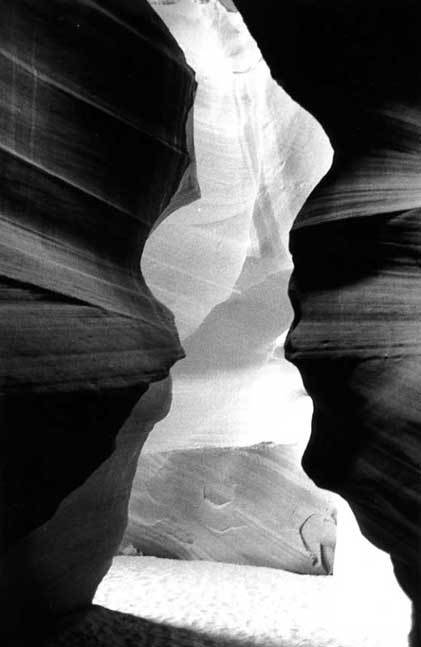
|
One of Allen's Good Nude Series;
these were done in the 1980s in New York. |
Good Nude 1
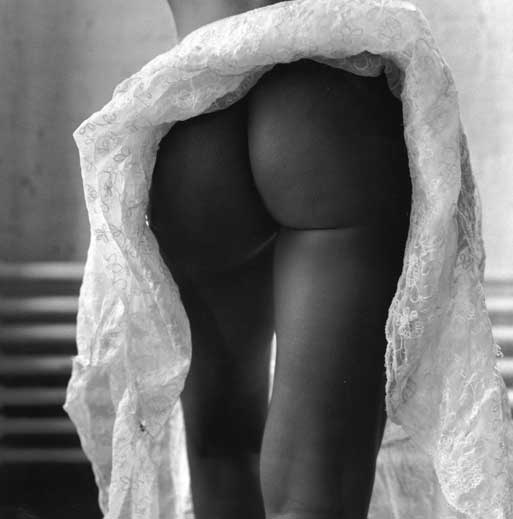
|
HOLLER!: Your ?Good Nudes? series is very imaginative! I really enjoyed the interplay between angles, contours, light and shadow, similar to Rhythmology, and the model?s form and poses, which made for great compositions. What do you look for in nude photography, what do you want to convey?
ALLEN: Early on, I wanted the nudes to serve as a means of empowering and de-mystifying black women in the colonial, victimized stereotypes that we were continually represented by. The more successful the nudes seemed to become to me, the more I was able to think about sensuality.
The thing that I didn't expect to happen or foresee coming in shooting the nudes was how much black women knew how to celebrate their own beauty photographically on their own terms and were able to provide their own voice and express their idea with me the photographer.
The bottom line is that the nudes are in concert with everything else I am interested in. It lends a specific point of view. It represents a form and a rhythm that is universal; again suggesting that the more specific something is, the more general.
From Allen's Good Nudes Series, 1980s, New York
|
Good Nudes 2
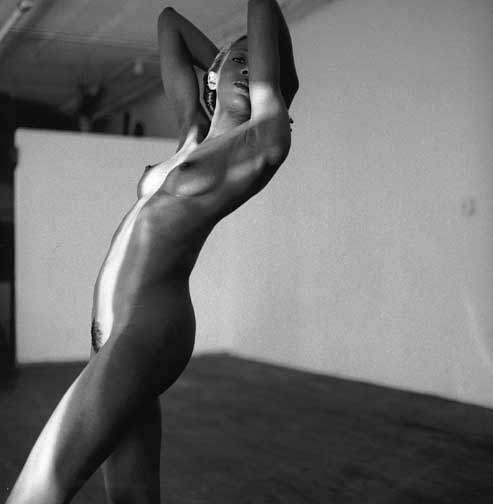
|
chicago, IL
Allen's Marching Band series; 2007-09 |
Marching Band 1
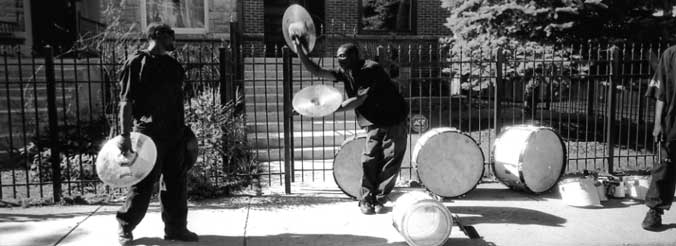
|
HOLLER!: Do you have long term projects, such as documentation or studies of individuals or groups?
ALLEN: There are a consistent number of ideas, for example, Light Moments, Hats and HatNots and Rhythmology are my ongoing ideas that continue to reveal themselves to me; and of course nudes which are more difficult to access, however I will always love looking at nudes.
|
|
Grambling, LA
Marching Band Series, 2007-09 |
Marching Band 2
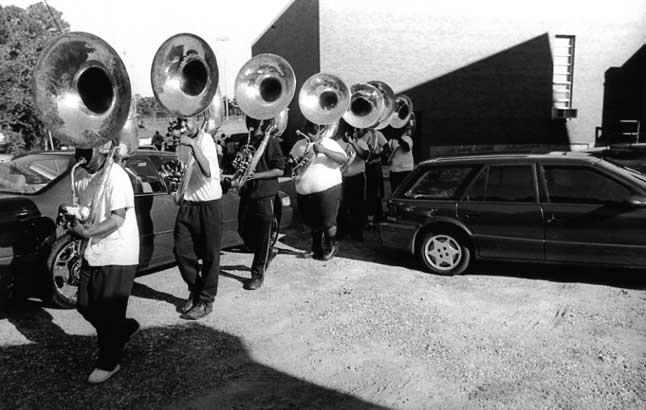
|
|
HOLLER!: Who outside of photography has influenced your aesthetic vision?
ALLEN: My mother and father were both very visual people.
Growing up in a city like San Francisco had an enormous impact; the generation that I grew up with was filled with beautiful references that my parents celebrated openly. Early on it was Sugar Ray Robinson, whom my father and his friends and the rest of urban black males adored. Then Sammy Davis Jr., with his movement, style and gesture; I was taught to look at timing, style and grace
Later, of course, I found Miles Davis, Duke Ellington, Monk, Romare Bearden, Bob Kaufman, Alvin Ailey, Sun Ra, to name a few. And then after moving to New York in 1978, I found Derek Walcott and his writing opened up the concept of language and image and metaphor.
Travel also has had an enormous impact.
|
New York, NY |
Marching Band 3

|
HOLLER!: What was your journey into photography, did you have an early beginning?
Late bloomer. Someone photographed me and I had never seen an 8x10 black and white of myself and I was thoroughly intrigued. When I asked the person how they did it, they were gracious enough to show me.
Then almost simultaneously, I saw a photograph of Gordon Parks and I asked, "Who was that" and "what did he do." It was the photograph of Parks in a Sherling coat with the collar turned up and that big moustache, and when they said, he was a photographer, I said, "Can I be a photographer too?" They said sure and therein began my interest in photography.
I was introduced to the Department of Parks and Recreation darkroom that the City of San Francisco provided free of charge or for minimal annual public fees and as a nineteen year old, I started photographing in Vietnam and the rest is history.
|
|
St. Louis, MO |
Marching Band 4

|
HOLLER!: You?ve worked on interesting series of Africa Americana over the years, themes that dealt with boxing, Hats & Hatnots, and Marching Bands to name some. What inspired you to work in those themes?
In the case of boxing, I had seen William Klein photographs and was literally thrown for a loop. Terrified by the clarity of his work the first time I saw it. Not ever having known him, and sensing that this could never be done in the street again, I had to find a way to rise to that level, and I was taken to Gleason Gym in NYC, it was like walking into the living room in the house that I grew up in. All the characters that I grew up with were there.
Working on that body of work, I began to develop an approach to photography. First it would be that black people in North America, as a people, were active, that we were going to be revealed as functional through industry or aesthetics. All the evidence I need to support this theory had been provided in the boxing gym. The gym was my first experience, my first interface, with black and white men who were on equal ground on all points. I was not going to photograph idle images of blacks for aesthetic gratification. But, in fact, that black people did something. That also coincided with my need to undo the oppressive imagery of black people as idle, dependent and victimized.
The connection with Africa is primarily rooted in my being an African American.
I was taught to love to look as a child. With the de-mystification of stereotypes by my parents who found all bigotry intolerable, we were encouraged to celebrate all aspects of culture.
More directly, other than photographs made in Africa, I am working on a photographic African mask series that is in direct response to the power and magic of African mask, which for the most part doesn't exist in Anglo-American culture or art.
One of the things that consistently reinforce my love and delight in looking and working is that I have become more mature and skillful. More consistently, I see the connections of this culture to African history and it is always gratifying to see that our behavior, gesture and rhythm are rooted in something identifiable.
Working to unmask the colonial deceit of oppression is so gratifying and rewarding and such a visual treasure that in many ways I actually feel blessed just to be able to see it let alone photograph it to share with others.
|
|
|
|
|
|
|
|